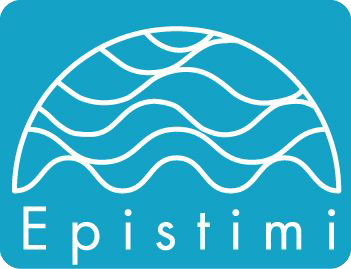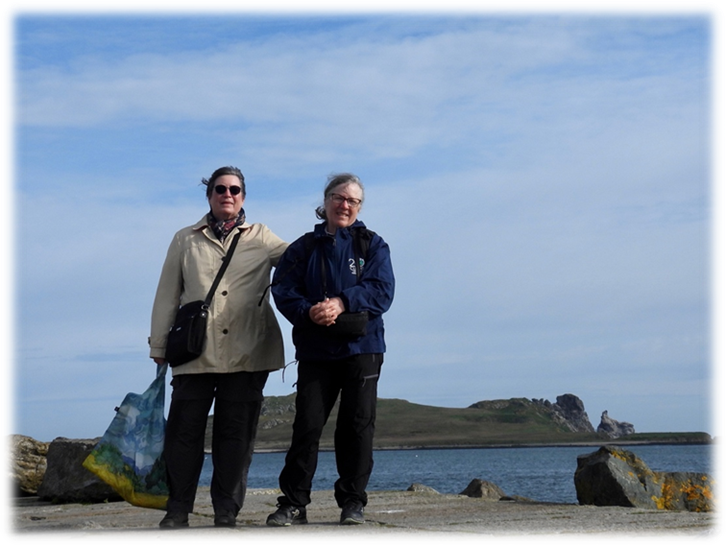The joys of being a senior woman leader
As women in senior leadership positions in STEMM, we have had opportunities to support our colleagues and create positive change in our institutions. In this post, we celebrate the joys of leadership.
By Patricia A. Maurice and Janet G. Hering
20 February 2024, DOI: 10.5281/zenodo.10556886
Although one of the main reasons for starting this blog was to facilitate senior women leaders finding and helping one another, we (Janet and Patricia) did not foresee just how much fun we would have reconnecting with colleagues and making new friends. In organizing this blog series, we have been struck by how full of hope, optimism, and joy many of our contributors and colleagues are. Being a senior woman leader offers many opportunities to do good in our professions and in the world at large, and the experience should be a fundamentally joyful one. This blog series has been a reminder of just how many strong, intelligent, skilled women there are in STEMM. We are thankful for all the women around the world who have stepped up to become leaders.
With 2024 off and running, and our blog continuing to develop, this seems like a good time to review some of the joys of being a senior woman leader in STEMM.
Learning new things and facing new challenges. No matter how long one serves, a good leader is always learning. As Terri Camesano wrote in her profile [1], “My suggestion is to try and frame everything you do as a learning opportunity, whether it is being Principal Investigator on a grant, building a new academic program, serving on an admissions committee, etc. And if you feel that you can make more of an impact by being in a formal leadership role, don’t be afraid to seek professional development and learn about becoming a leader.”
Taking on a leadership role necessarily involves stepping out of one’s comfort zone. Janet came to a new realization of how essential communication is. She was able to support the development of a new communication channel for Eawag researchers, Voices of Eawag [2]. In using this channel herself, Janet could improve her skills in non-scientific writing. This experience was part of the motivation for her to initiate this blog series with Patricia.
A good leader needs to be able to grasp the fundamentals of colleagues’ research and teaching, even in disciplines far removed from her own background. As an interdisciplinary center director, Patricia initiated campus-wide research symposia which displayed cutting edge science and engineering research and helped to spur new interdisciplinary collaborative projects.
Working with others in different disciplines. Both Janet and Patricia took on academic leadership positions at the interface between science, technology and society. Janet, as the Director of a publicly funded research institute, was able to support her colleagues in conducting actionable research that spanned disciplines, engaged stakeholders, and contributed to societal well-being [3]. She also supported her colleagues in expressing their political opinions without compromising the capacity of her institution to provide trusted evidence for decision makers [4]. As an interdisciplinary center director and an associate dean for research at a private Catholic university, Patricia found great joy in her ability to support and seed research in many disciplines and along the way she found her own research expanding beyond environmental science and engineering to encompass biomedical science and nanotechnology.
Contributing to the success of others. Carla Koretsky stated this perfectly in her profile [5]: “I love being able to support the success of others. Despite many challenges, the hard parts of the job become worthwhile when work that I do clearly helps to support the achievements of outstanding faculty, staff or students.”
Janet considers the 50 members of the permanent scientific staff hired during her directorship and the 13 joint professorships established as her most important legacy. She was able to see individuals she hired as tenure-track research group leaders advance to leadership positions as Department Heads and even one member of Eawag’s Directorate as well as being appointed as adjunct professors by partner universities. Patricia was able to greatly expand free (i.e., no machine time or user fees), university-wide laboratories to include a wider range of state-of-the-art instrumentation and to provide resources to help graduate students complete their degrees and for faculty to pursue new, ‘risky’ research projects. Patricia found that her greatest job satisfaction came from all the times she worked behind the scenes to ensure the success of junior faculty, often without them knowing about her efforts.
Solving problems. One of the best pieces of advice Patricia ever received was from a senior woman leader who commented that the key to successful leadership was not spending too much time on problems but rather on solutions. Good leaders need to be able to identify problems, hopefully before they become intractable. But, once a problem is defined, dwelling on it brings everyone down and can cause institutional paralysis. A far more positive (and joyful) approach is to focus on how best to solve the problem with whatever resources are (or can be made) available. Carla Koretsky’s profile [5] provides a great example of a leader rolling up her sleeves to solve a budget crisis during the pandemic. Solving problems can provide great job satisfaction.
Serving as a role model for positive leadership by women. Both of us have been asked to serve as mentors for early career researchers (ECRs), especially women. It was a particularly inspiring experience for us to join two ECRs and two other senior women leaders in writing about how these two groups can support each other to improve academic research institutions [6]. We have also participated in leadership training programs for women in STEMM. Our success in exercising leadership within our institutions adds to the (abundant though inadequately acknowledged) evidence that women are entirely capable of taking on these demanding (but also rewarding) roles. We have also encouraged our female colleagues to consider taking on leadership roles themselves and provided guidance, including Janet’s blog post on questions for aspiring leaders [7]. Although it’s time-consuming, both of us have written many letters of evaluation for tenure and/or promotion along with awards nominations. It’s crucially important for such packages to include letters from women leaders.
Having opportunities to effect systemic change. As part of an interview published by the IEEE Computer Society, Maria Klawe summarized her over 30-year career at top-notch academic institutions, ending with, “…at Harvey Mudd I am the first female president. My challenge has been to transform culture so that women and members of other under-represented groups are encouraged and supported in all areas and at all levels. In my last three roles that has involved leading a significant strategic planning process that helped bridge silos and create a culture that embraced diversity and inclusion. My greatest reward has been seeing the continuing growth and commitment to diversity and inclusion at all three institutions.” [8]
At Eawag, Janet was able to oversee the implementation of a portfolio of measures to support women and promote diversity. Her personal favorite is Eawag’s Tailwind program, which supports women holding or working toward doctoral degrees in their return to work after maternity leave. Tailwind grants provide mothers with short-term support for their rapid re-entry into scientific work (see pp. 14-15 in the linked file).
There’s a great verse in the play Hamilton, “No one really knows how the game is played; The art of the trade; How the sausage gets made; We just assume that it happens; But no one else is in the room where it happens.” [9] In her department and college and the center she directed, Patricia was the first woman to be in the ‘room where it happens,’ where the most important decisions were made. She was the first woman in these entities to see how the ‘sausage gets made,’ to raise issues of fairness and equity, to pave the way for future women, and to use hard-won knowledge to help junior faculty, especially junior women.
Earning a deserved and equitable level of compensation. Years ago, one of Patricia’s college friends, who became a professor and practicing MD in the field of problem pregnancies, made the point that women often feel guilty about demanding excellent compensation. But, she explained that if you have a very demanding job, you can do that job better if you aren’t also worrying about funding your home and family. Being able to afford housekeeping help, excellent child care, a professional wardrobe, etc. frees you up to focus on challenges on the job and pushing the boundaries to be at the top of your profession. If you are working long hours and constantly making big decisions, being able to afford an occasional vacation isn’t a luxury; it’s a necessity.
Although STEMM careers require a great deal of hard work, creativity also requires an ability to take time to think deeply. As Virginia Woolf wrote in A Room of One’s Own, “By hook or by crook, I hope that you will possess yourselves of money enough to travel and to idle, to contemplate the future or the past of the world, to dream over books and loiter at street corners and let the line of thought dip deep into the stream.” [10]
Unfortunately, one of the problems women in STEMM face is that we often are not compensated as well as our male colleagues. According to a 2021 report by the Pew Research Center [11], “Women in STEM jobs tend to earn less than men. The median earnings of women in STEM occupations ($66,200) are about 74% of men’s median earnings in STEM ($90,000).” It’s important to fight for pay equity so that we can devote the time and energy needed to do our jobs well and to push boundaries for greater excellence. Becoming a woman leader in STEMM often provides a higher salary, along with the ability to advocate more forcefully for salary equity for others.
Joy in attaining our full potential. Marie Curie once stated that, "Life is not easy for any of us. But what of that? We must have perseverance and above all confidence in ourselves. We must believe that we are gifted for something and that this thing must be attained." [12] Many women are ‘born to lead’ and find joy in using their unique talents, abilities, and gifts to lead others. There can be pure joy in leading if that is what one feels destined to do.
Questions for further consideration:
· Do you find joy in being a senior leader? If so, what are the most joyful aspects of your career and how can you continue to build on them?
· What new things have you learned in the past month? The past year? How can these learning experiences improve your ability to be a leader?
· Have you had opportunities to be ‘in the room where it happens’? If so, how have the experiences changed your perspectives and your ability to do your job and help others do theirs?
References and notes:
[2] https://www.voicesofeawag.ch/
[3] Hering, J.G. (2018) “Getting Water Research into Policy and Practice (GRIPP for Water)”, Clarke Prize lecture. National Water Research Institute (NWRI): Irvine, CA, https://doi.org/10.5281/zenodo.1469682.
[4] Hering, J. (2021) Freedom of expression – it’s not just for science. Voices of Eawag, https://www.voicesofeawag.ch/detail/freedom-of-expression-its-not-just-for-science/
[6] Hering, J.G., Green, S.A., Heckmann, L., Katehi, L.P.B, Maurice, P.A. and Young, S. (2022) “A call for an alliance between female academic leaders and early career researchers to improve the academic STEM system”, Elephant in the Lab, doi:10.5281/zenodo.6514731, https://elephantinthelab.org/a-call-for-an-alliance-between-female-academic-leaders-and-early-career-researchers-to-improve-the-academic-stem-system/
[7] Hering, J.G. (2022) “Eight Questions for Women Embarking on Academic Leadership”, 500 Women Scientists Fribourg-Bern blog, https://www.500womenscientistsfribourgbern.ch/post/eight-questions-for-women-embarking-on-academic-leadership
[8] https://www.computer.org/publications/tech-news/events/women-in-stem-maria-klawe
[9] Miranda, Lin-Manuel. “Hamilton: An American Musical.” In Hamilton: The Revolution. Edited by Jeremy McCarter. New York: Grand Central Publishing, 2016. Lyrics for “The Room Where it Happens”
[10] Woolf, Virginia. A Room of One’s Own. Penguin, 2004.
[12] "Madame Curie: A Biography". By Eve Curie Labouisse, November 30, 1936. Found at: https://www.azquotes.com/author/3506-Marie_Curie

